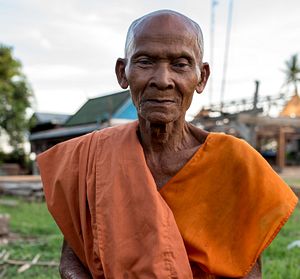Luc Forsyth and Gareth Bright have set out on a journey to follow the Mekong river from sea to source. The Diplomat will be sharing some of the stories they’ve found along the way. For more about the project, check out the whole series here.
***
In the last installment of A River’s Tail in Cambodia, we travel to the remote village of Kbal Romeas, where the residents are in danger of losing their land and traditional way of life if the Sesan II dam becomes operational.
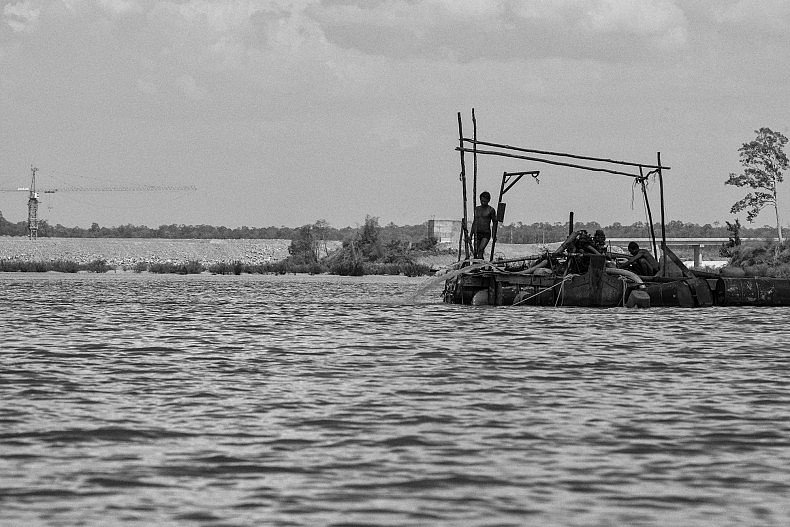
The Sesan II dam, if built, will displace multiple minority tribes, as well as substantially impact their ability to farm and fish. The community is divided; roughly half the villagers have accepted a resettlement compensation package, while the other half staunchly refuses to leave their land. Photo by Gareth Bright.
The day before, we had visited Koh Sralay, a community located downstream of the dam that faced reduced fishing prospects, which would quite possibly derail their family livelihoods. After that, we wanted to learn about the challenges ahead for people living upstream, on the site of the dam’s future reservoir. With the addition of Meach Mean, our crew size had grown to six (including a driver and translator), and we packed ourselves into the back seat of an aging Toyota Camry for a two-hour drive to the remote village of Kbal Romeas.
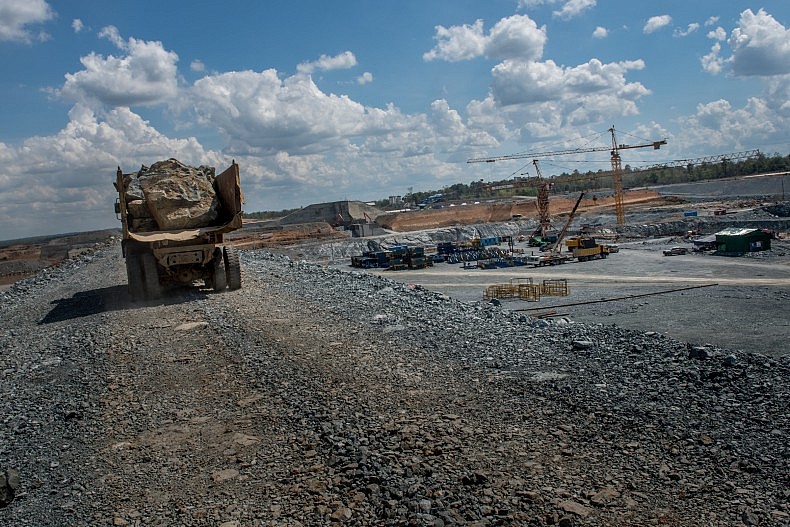
The construction site of the Sesan II dam. The Chinese-financed dam will block two major tributaries of the Mekong, displacing thousands, disrupting fish migrations, and inundating roughly 36,000 hectares of land. Photo by Luc Forsyth.
As we neared the village, the roads became increasingly treacherous and were dotted with deep mud holes from recent rains. Eventually the two-wheel drive car could go no further with such a heavy load of passengers and the driver ordered us out. Meach called ahead to the village and arranged for a small fleet of motorcycles to drive out and shuttle us the last few kilometers.
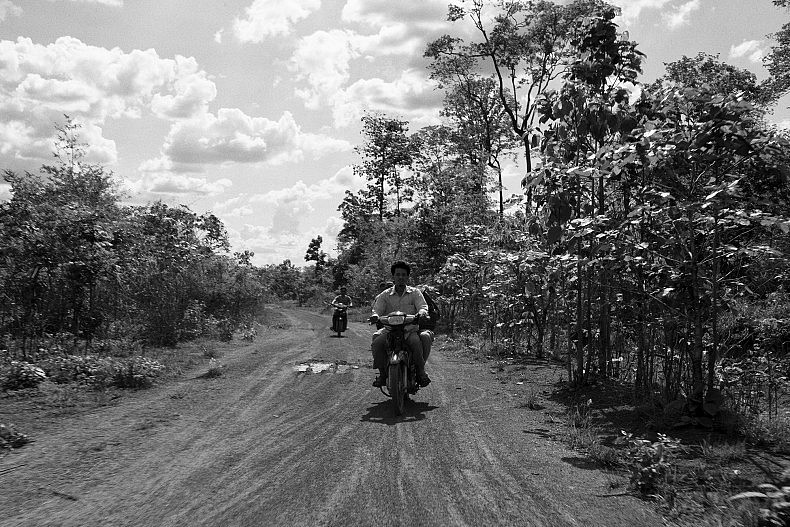
The long dusty road to Kbal Romeas. Photo by Gareth Bright.
Kbal Romeas was home to 136 families of Bunong, an ethnic minority tribe who have inhabited the area northeast of Steung Treng for around 2,000 years. Though Buddhism was making inroads in Bunong communities, they were predominantly animists who believed in living in harmony with nature, and who fed themselves almost entirely from natural resources. The only road leading to the village was unpaved, and the locals owned no cars. Bunong do not believe in fencing-in their domesticated animals, instead trusting that their herds will make their way home each night. Piglets ran openly through the community, competing with chickens for mangos that fell from the trees above. Some Bunong do not speak fluent Khmer, the official language of Cambodia. These were the people who had the most to lose if Sesan II was built.
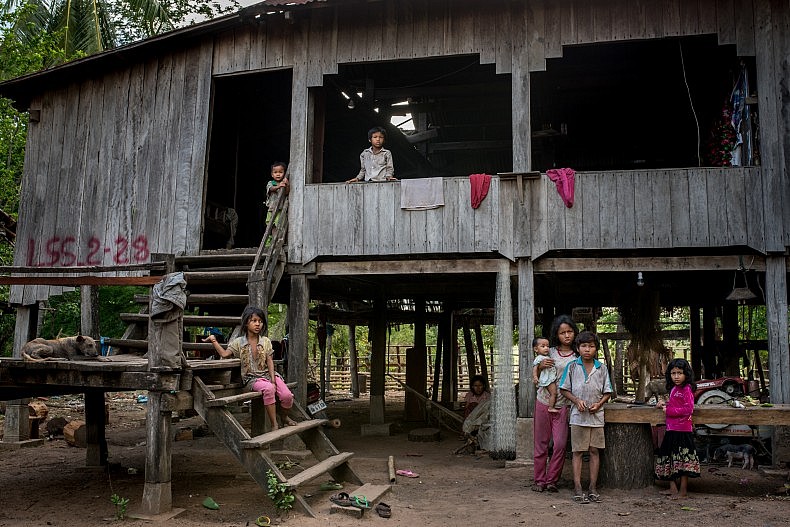
A Bunong family in front of their house in the village of Kbal Romeas. The red markings on their house indicate the family has agreed to the compensation package offered by Sinohydro – the Chinese firm building the Sesan II dam – and will vacate their property. Photo by Luc Forsyth.
“This whole area will be 10 meters underwater,” Meach told us upon entering the village. “36,000 hectares will disappear during the first rainy season after the dam is finished.” As the proposed date of completion for Sesan II is 2017, there was not much time left.
The Red-Blue Divide
“There are three reasons I am against the dam,” 29-year-old Dam Samnang told us (he spoke no English and so was thankfully spared from the unfortunate irony presented by his name). “It provides no direct benefits to people in this community, it will destroy all our houses, and it will ruin the river system so that we can never come back.” Though he spoke simply, his words were loaded with emotion.
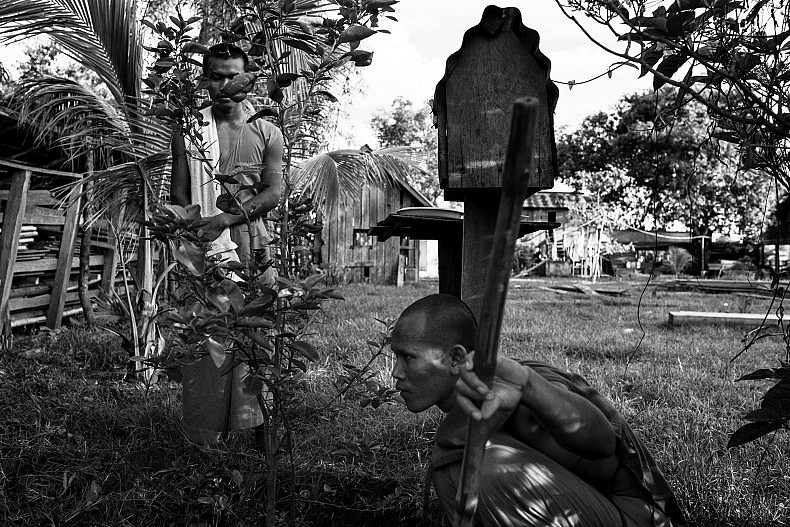
Monks work in the garden of their pagoda in the village of Kbal Romeas. Photo by Gareth Bright.
Samnang went on to describe his feelings of frustration over the community’s lack of power to protect their own lands, something he attributed partially to a national ambivalence toward minority tribes like the Bunong. “Some Cambodians don’t understand our beliefs,” he explained. “Our ancestors are buried here and if they flood the area we will not be able to come back and visit them. I can’t put a [monetary] value on graves, but if the prime minister’s family graves have value, then why don’t ours?”
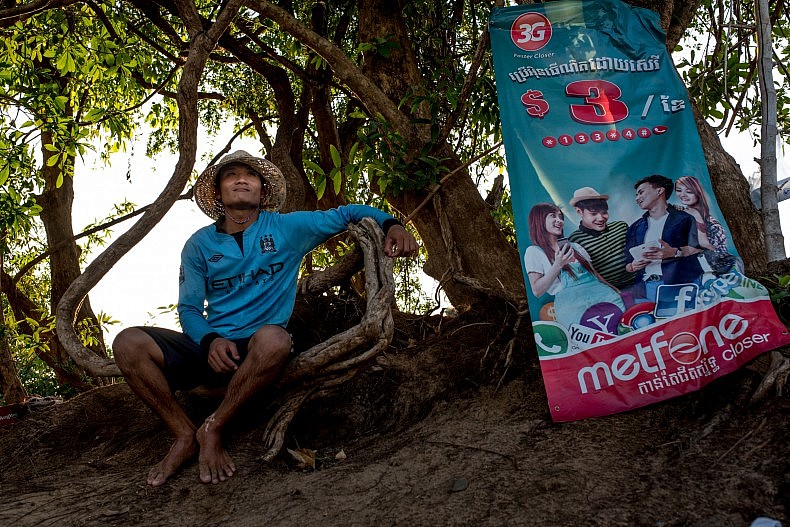
A Bunong man sits next to a cell phone company advertisement. Photo by Luc Forsyth.
With so much history and culture at stake, it seemed to be a forgone conclusion that the Bunong would unanimously oppose the dam. But as we learned over the course of our visit, the community had been the target of a systematic divide-and-conquer campaign. Samnang told us how even his most basic attempts at mobilizing his community had been met with fierce opposition, culminating with a visit from the local authorities who formally banned them from signing petitions or hosting environmentally related gatherings. What legal basis they had for doing so was unclear to Samnang, and he suspected that they had no way of enforcing what they said. More likely, he thought, it was a thinly veiled attempt to intimidate the villagers and sow divisions within the community.
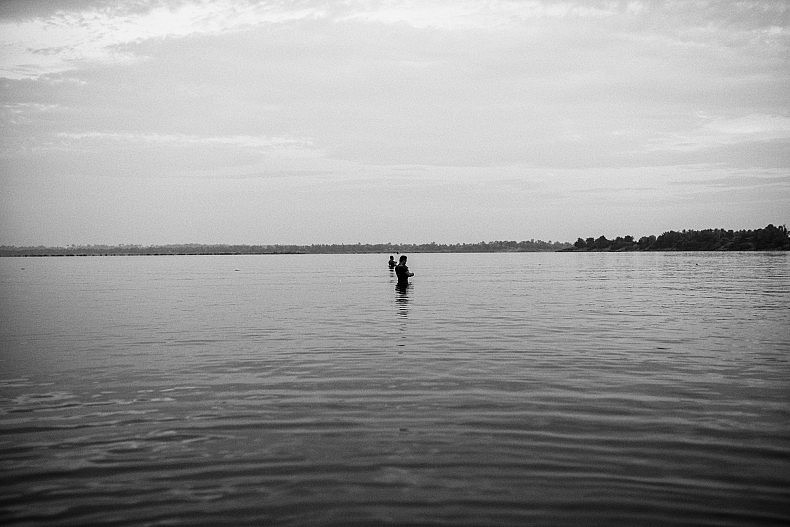
A fisherman early morning in the river casting his nets off the banks of Kbal Romeas. Photo by Gareth Bright.
Perhaps the most important factor in splitting the community was the resettlement package on offer from the company that owned Sesan II – Sinohydro Resources. A wide variety of factors decided the amount on offer for those willing to relocate, but the basic premise was simple: go away and receive money, land, or a new house — in some cases all three.
For many, including Samnang and his family, no amount of money would cause them to peaceably abandon their home, but for those in the village whose economic situation was desperate, the package was harder to turn down.
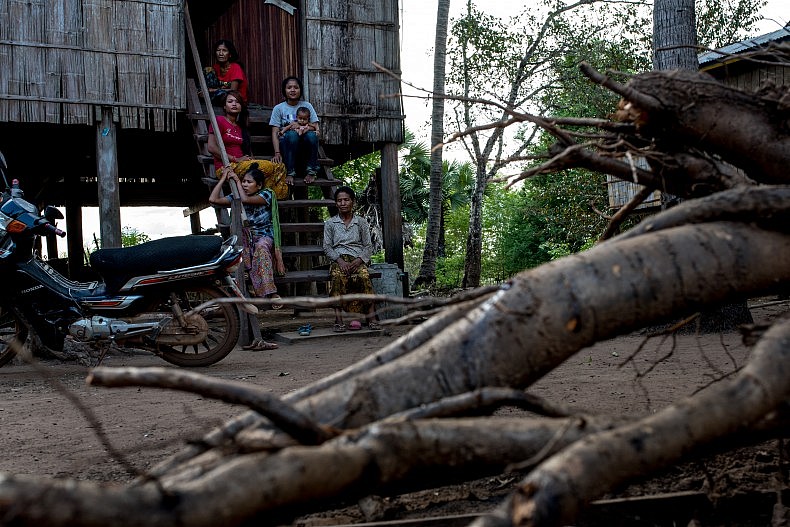
A Bunong family sit in front of their house in the village of Kbal Romeas, northeastern Cambodia. Photo by Luc Forsyth.
Widows and the extremely impoverished were some the most susceptible to Sinohydro’s offers, Meach Mean told us, and more than a third of the community had already agreed to be relocated. “A few years ago everyone rejected the deal,” Meach explained, “but when [the authorities and company representatives] kept coming back, more and more accepted. Poverty forces them to accept.”
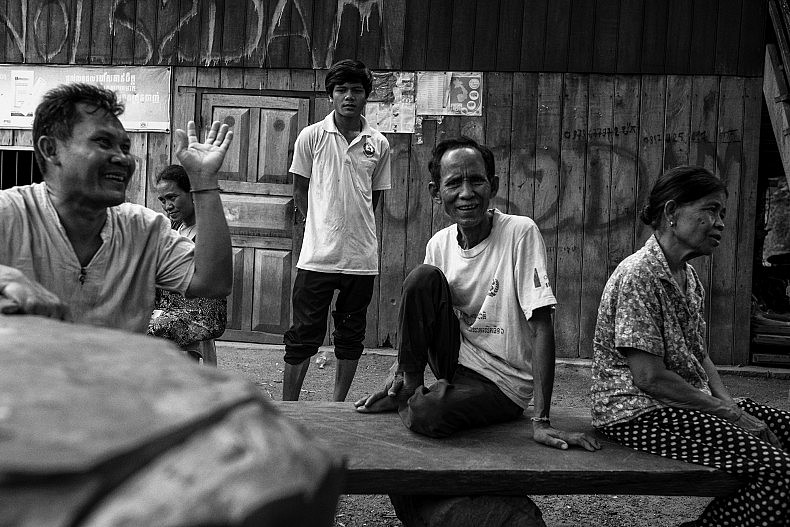
A Bunong family stands in front of their house in the village of Kbal Romeas. Photo by Gareth Bright.
Once a family had accepted, a sign was spray painted in red on the front of their house, proclaiming their decision publicly. In response, those who remained adamantly opposed painted “NOLS2DAM” (No Lower Sesan II Dam) on their own homes, making it possible to walk along the village’s central road and know at a glance who was staying and who was going. A handful of families, including Samnang’s, had gone one step further, using green paint to write “we will fight until we die, we will not leave” in Khmer script.
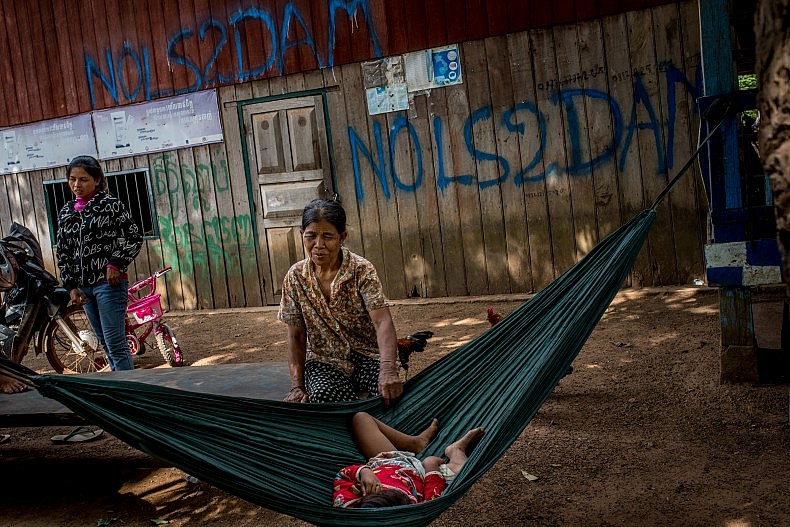
A Bunong family stands in front of their house in the village of Kbal Romeas. The blue paint indicates that the family has rejected the resettlement package offered by the Chinese dam builders. Photo by Luc Forsyth.
Progress at What Cost?
As we prepared to leave Kbal Romeas, our last destination on the Cambodian leg of A River’s Tail, we couldn’t help but fear the worst. Despite strong voices of opposition from people like Samnang and Meach Mean, the wheels of development seemed to be inexorably turning in Cambodia, regardless of the impacts on those living from nature in traditional ways.
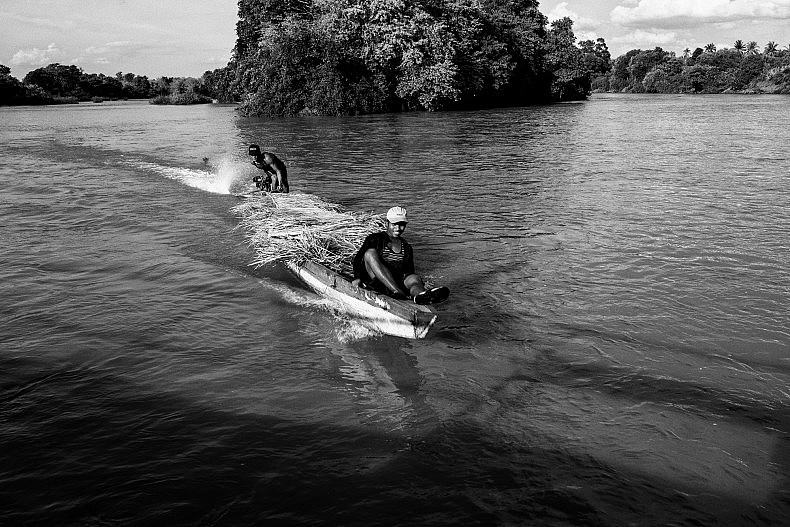
Young boat drivers in Kbal Romeas. Photo by Gareth Bright.
Being outsiders, it was not our place to decide what developmental policies are best suited to improving the quality of life for Cambodians, but it was difficult to stomach the thought that a cheaper electricity bill was worth destroying a two thousand-year-old culture.
“I’m worried for my parents and I’m worried for my kids,” Samnang had said in one of our last conversations. “This dam will be a disaster for us; our destiny is in trouble. They say they want to develop Cambodia, so why do they destroy our homes?”
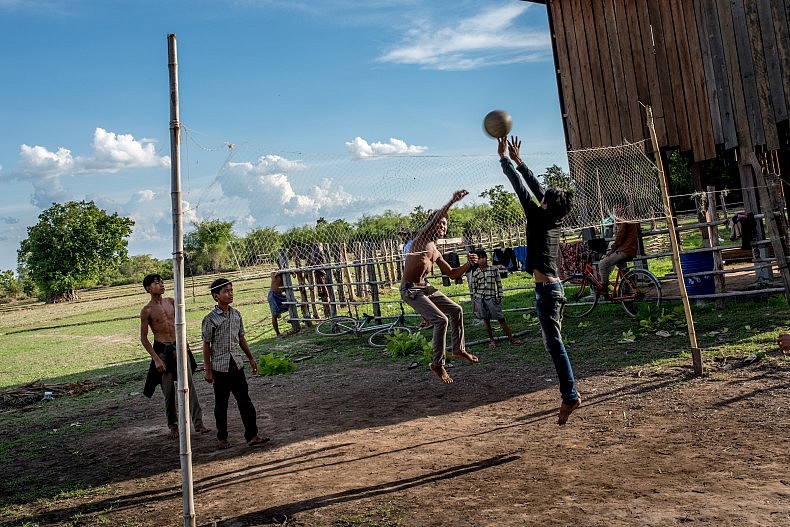
Young Bunong men play volleyball in the afternoon in the village of Kbal Romeas, northeastern Cambodia. Photo by Luc Forsyth.
Our time with the Bunong brought the realities of modern progress to the forefront of our consciousness. Most people living in modern urban environments have come to expect a certain level of comfort, and life in major cities would indeed be difficult without the conveniences electricity brings — air conditioning, refrigeration, and cell phones, for example. In all but the most extreme cases, even those living below the poverty line make use of power in one way or the other, and you would be hard pressed to find a city-dweller anywhere on earth who would not gladly welcome a cheaper electricity bill. But the sources of those luxuries often remain out of sight, far away from the bright lights of the cities in places like the one we had just come from; someone or something, whether an entire Bunong village or an uncommon species of fish, would usually suffer to keep those lights running affordably.
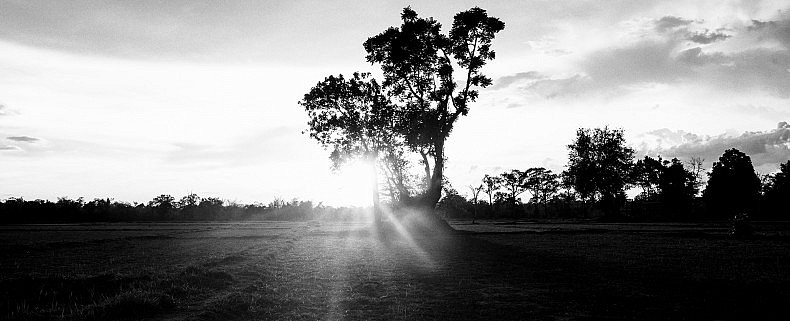
Sun through the trees near the remote village of Kbal Romeas. Photo by Gareth Bright.
When would the cost become too high, we wondered? At what point would the social or environmental costs become too great to justify the benefits? And who would be responsible for making those decisions?
These were the questions in our minds as we prepared to say goodby to Cambodia for the time being and head toward the border of the Lao People’s Democratic Republic to begin the third leg of A River’s Tail.
This piece originally appeared at A River’s Tail.













